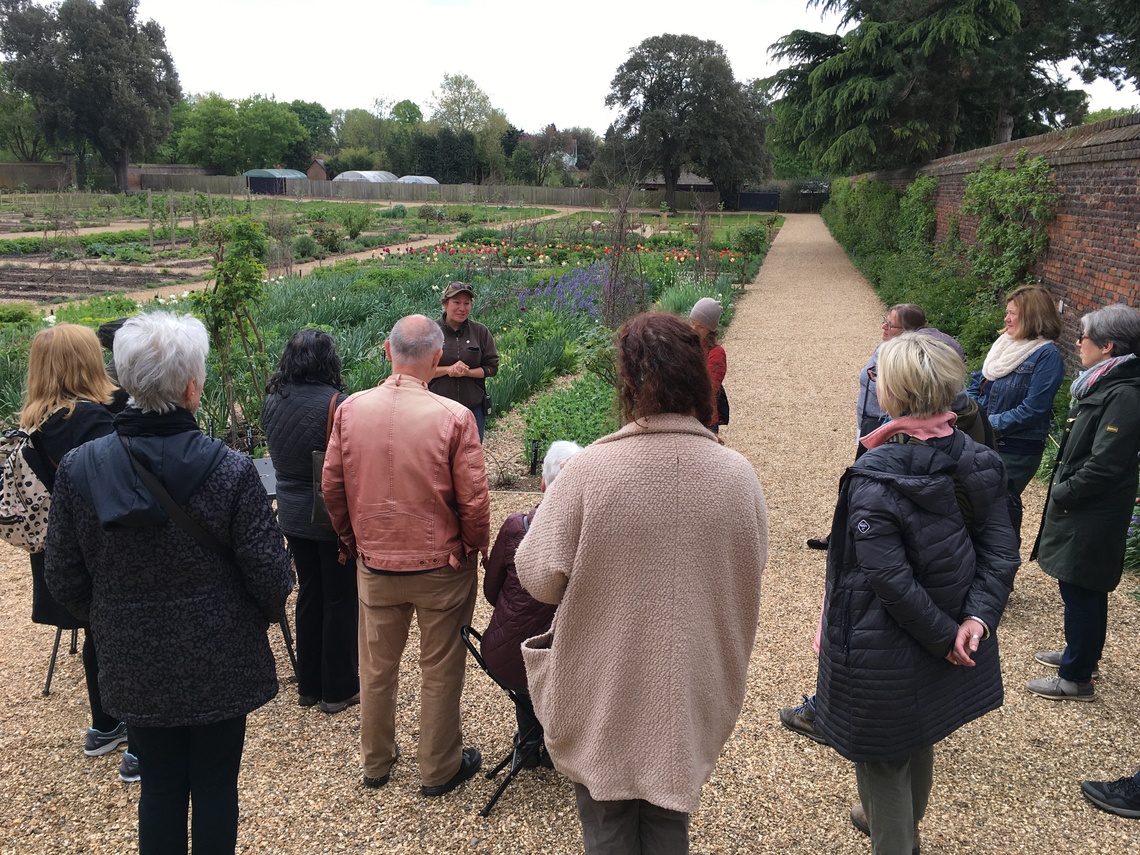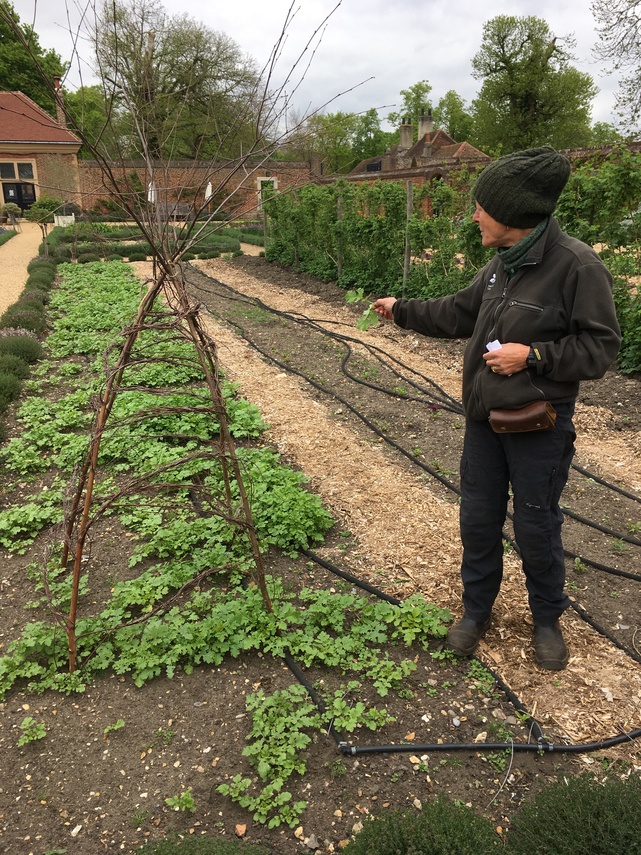Following on our very popular walk with Head Gardener Rosie Fyles where we learned how Ham House are adapting their formal gardens to climate change, her colleagues Vanessa Park and Janette Slack-Smith showed us how to “grow our own” sustainably.

Twenty years ago, the area known as the kitchen garden was 8 squares of manicured lawn. One by one, the gardeners transformed the space into a beautiful space that deserves its name. The garden now supplies the cafe on site, delivers fresh produce to a food bank once a week, and sells any additional fruit and veg to visitors.
Janette introduced attendees to the flower section. While she grows flowers to cut and use in bouquets in the House, she only harvests about 50% of her produce and leaves the remainder for pollinators to feast on. Extend the season as much as possible she advises - you can grow flowers from March to the first frost in early November - and use open, single flowered varieties that allow easy access for pollinators.
All fruit, veg and cut flowers are grown without artificial fertilisers or the use of chemical pest control. It can be nerve-wracking to wait for ladybirds and others to feast on aphids, but using chemicals would kill beneficial insects alongside pests. Vanessa explained how she uses companion planting which also helps keep pests at bay. The garden has a huge variety of herbs and vegetables, including rocambole garlic, red orach, anise hyssop and amaranthus.

We had a look "behind the scenes" and learned how the gardeners make compost that improves the poor sandy soil on site. Except for a few very persistent weeds, they use all organic matter that arises on the grounds. To achieve the right nutrient balance needed for composting, carbon rich brown materials from tree cutting and cardboard, including shredded paper coffee cups, are added. The final product greatly helps enrich the soil and retain its moisture. Additional mulches reduce both the need to weed and to water in dry periods.

Participants also got to see the garden’s newest edition, an edible hedge and two pear plots. The garden is now home to over 30 apple trees of London and Surrey varieties.
Thank you to Vanessa and Janette for this informative walk, and to Ham House for granting participants free access to the kitchen garden as part of the event. You can follow Ham House Gardens on Twitter or chat to the amazing gardeners on your next visit.
What participants said:
"The expertise and dynamism of the gardener's was impressive and I enjoyed learning about the benefits of companion planting, how to make good compost, good plants for pollinators and promoting biodiversity in the garden.
A most worthwhile event on many levels, social interaction with other like-minded individuals was also an important element."
“Such a great event - friendly, relaxed and a very informative talk by Ham House gardeners. With ref to what I will take away from the event - I will be trying to be even more eco-environmentally friendly with choice of plants/compost etc
I learnt to be more resourceful in gardening - by splitting plants up to smaller plants and more growing from seed. Also being kind to plants when it does not take/or does take over the garden.
A wonderful event and would encourage you to arrange further similar events for the local community."
"It was very interesting and informative and there were lots of ideas to try out in my own garden. I really liked the talk about succession flowering and how to extend the seasons with a mix of bulbs, hardy annuals that would self-seed, half-hardy annuals as well as those tender annuals.
Also it was interesting to see the compost area and how it is managed. And from the edible garden, lots of plants to possibly try out such as Red Orach, Anis Hyssop and Amaranthus. It was also interesting to see the new orchard and the newly planted mixed hedge at the back of the garden.
I am really glad I was able to attend and will look forward to future events."
"I thought the Ham House walk & talk was excellent! The Gardeners were so friendly, enthusiastic and knowledgeable; their gardens were a delight. The Gardeners confirmed many things I sort-of knew: like companion planting, encouraging blue flowers for bees, preferring original flower forms rather than fancy multi-petalled hybrids, etc. The Gardeners’ attitudes to more nature-friendly practices will encourage me to continue mixing a wide variety of plants in my garden. And I was especially pleased to hear of their fondness for cardboard!"
